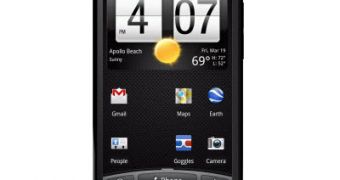Wireless carrier Sprint has recently announced that it would soon make the first ever Android-based mobile phone to include both 3G and 4G connectivity options, the HTC EVO 4G, available for purchase to its users, and now we learn that the carrier also released the Sprint Developer’s Guide for the device. Covering additional functionality available with the phone, the guide is aimed at those developers looking forward to start building applications for the handset before it arrives on shelves.
According to Sprint, the included documentation in the document should be accurate, though there might be changes in the functionality of the device and in API design before the handset arrives on the market. However, the carrier will make sure that the documentation is updated with any changes that might emerge. What the guide comes around with includes info on the 4G-WiMAX Network, on the handset's secondary camera, its HDMI output, and browser, as well as documentation on developers’ tools, including the installation of Eclipse or Android 2.1 SDK and more.
“Any new APIs covered in this documentation will be depreciated when an Android release supports the standard API that can replace the APIs in this documentation. In some cases constant values will need to be hard-coded in your application until a future SDK is released from the Android team that supports these future constant values. In the included code samples some CDMA values may be new as of the Android Éclair release, in order to compile these values on prior builds such as the Android Cupcake release we have included the constant values,” the carrier notes.
Regarding the connectivity capabilities of the handset, for example, in the developer's guide Sprint mentions that the Android Éclair release does not come with support for WiMAX, though the carrier is working on this matter. The 4G active data connection can be detected via the ConnectivityManager, and transition between 3G and 4G will be possible, the carrier states, adding that users will also have the possibility to move to a Wi-Fi connection if available. Take a look at the Sprint Developer’s Guide for HTC EVO 4G here.

 14 DAY TRIAL //
14 DAY TRIAL //